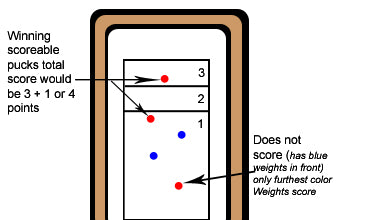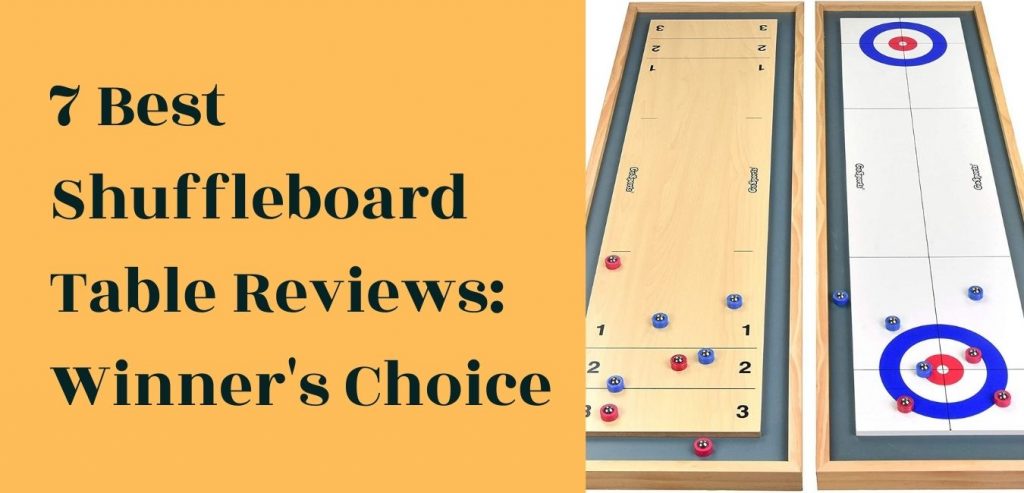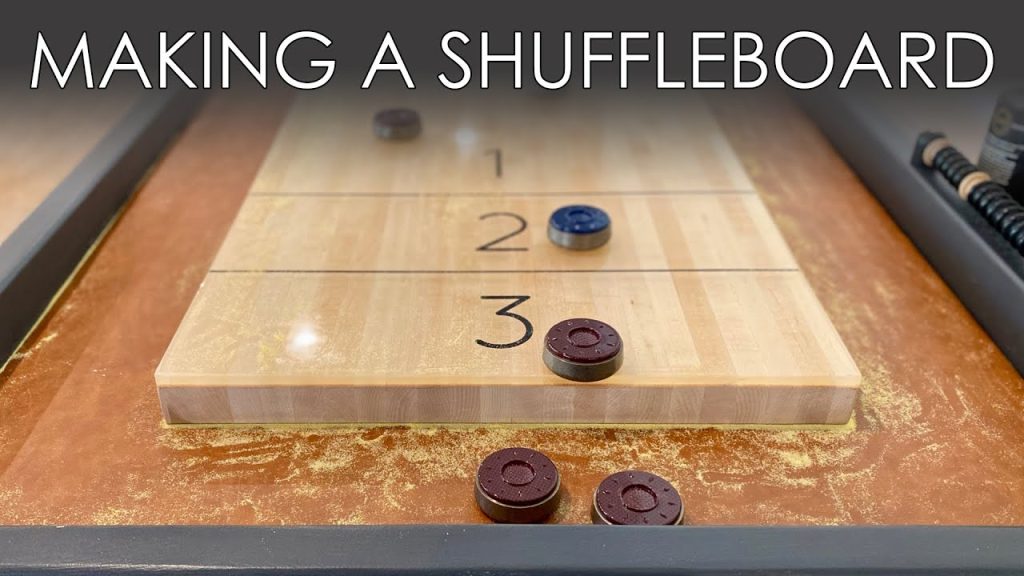Keeping score in shuffleboard is simple once you understand the basics. This guide will explain the scoring system step-by-step.
Shuffleboard is a fun, competitive game enjoyed by many. Whether you’re new to the game or need a refresher, knowing how to keep score is essential. The scoring system may seem confusing at first, but with a little practice, it becomes second nature.
In shuffleboard, players slide pucks down a narrow court, aiming to land them within specific scoring zones. Points are awarded based on where the pucks come to rest. Understanding these zones and the rules for scoring will help you enjoy the game more and play it correctly. Let’s dive into the details of keeping score in shuffleboard.
Introduction To Shuffleboard
Shuffleboard is a fun, relaxing game played on a long, smooth surface. Players slide weighted pucks towards a scoring area marked on the board. This game is enjoyed by people of all ages and skill levels. Understanding how to keep score in shuffleboard is essential for a fair and enjoyable game.
Brief History
Shuffleboard has a rich history dating back to the 15th century. Originating in England, it was a popular pastime among kings and commoners alike. Over the years, shuffleboard has evolved and spread worldwide. Today, it is played both indoors and outdoors, with various adaptations and rules.
Basic Equipment
The essential equipment for shuffleboard includes a shuffleboard table or court. The table is long and smooth, often made of wood or synthetic material. Players use pucks, also called weights, which slide on the table’s surface. Each player or team has a set of differently colored pucks.
Another key piece of equipment is the scoring board. This helps track points during the game. Some shuffleboard tables come with electronic scoring systems. Others use manual scoring methods.

Credit: shuffleboardcity.com
Shuffleboard Rules
Shuffleboard is a fun and strategic game. Understanding its rules is key. This guide will help you learn the basics. Let’s dive into the core rules of shuffleboard.
Objective Of The Game
The main goal in shuffleboard is to score points. Players take turns sliding pucks towards a scoring area. The closer the puck is to the edge, the higher the score.
Points are counted at the end of each round. The player or team with the most points wins. Simple, right?
Game Setup
Start by setting up the shuffleboard table. Make sure it is clean and smooth. Each player needs four pucks of the same color. Arrange them at the shooting end of the table.
Players stand behind the designated shooting line. Take turns sliding pucks towards the opposite end. Keep the order of play consistent throughout the game.
Use your hand to slide the pucks. Aim for the scoring zones. Avoid sliding off the table. Precision and control are key.
Scoring Basics
Understanding how to keep score in shuffleboard is key to enjoying the game. Let’s dive into the basics of scoring. This will help you keep track of points accurately during your shuffleboard games.
Point Values
In shuffleboard, the point values are simple. The closest puck to the far end scores the highest. If your puck lands in the highest scoring area, you earn more points. Here is a breakdown of the point values:
| Zone | Points |
|---|---|
| Closest to the end | 10 points |
| Middle | 7 points |
| Farthest from the end | 3 points |
Scoring Zones
Shuffleboard courts are divided into scoring zones. These zones determine how many points a puck earns. Here’s how the zones are typically laid out:
- Zone 1: Closest to the end. Worth 10 points.
- Zone 2: Middle. Worth 7 points.
- Zone 3: Farthest from the end. Worth 3 points.
If your puck overlaps two zones, you score the lower point value. This rule ensures fairness in scoring.
Also, if your puck touches the end line, it does not score. Make sure your puck is fully within a scoring zone for points to count.
Gameplay Techniques
Shuffleboard is an exciting game that requires skill and strategy. To excel, understanding gameplay techniques is essential. In this section, we will explore shooting the puck and defensive strategies. These techniques will help you gain an edge over your opponents.
Shooting The Puck
Shooting the puck is the heart of shuffleboard. Start by holding the puck lightly. A firm grip can affect your control. Aim carefully. Visualize where you want the puck to go. Push the puck smoothly along the board. Avoid jerky movements. Focus on speed and accuracy. Practice makes perfect. The more you practice, the better you will become.
Defensive Strategies
Defensive strategies are crucial in shuffleboard. Blocking your opponent’s puck can prevent them from scoring. Place your puck in strategic spots. This can make it harder for your opponent to score. Another tactic is to knock your opponent’s puck off the board. This can be a game-changer. Always stay alert. Watch your opponent’s moves closely. React quickly to maintain control.
Keeping Score
Knowing how to keep score is essential in shuffleboard. Scoring helps track the progress and determine the winner. There are two primary ways to keep score in shuffleboard: manual scoring and using a scoreboard.
Manual Scoring
Manual scoring involves recording points by hand. Use a notepad or a scoring sheet to keep track of points. The player who gets their puck closest to the far edge of the board without falling off scores the most points.
- Each puck in the highest scoring zone gets 3 points.
- Pucks in the middle zone get 2 points.
- Pucks in the nearest zone get 1 point.
- Pucks that fall off the board score 0 points.
Add the points for each player after all pucks have been played. Repeat for every round until the game ends.
Using A Scoreboard
A scoreboard simplifies tracking points. Many shuffleboard tables come with built-in scoreboards. Digital scoreboards are also available for a modern touch. Here’s how to use a scoreboard:
- Assign each player or team a side on the scoreboard.
- Press the button or move the slider for the points earned each round.
- Keep updating the score after each round.
Digital scoreboards may have additional features like timers and automatic point calculation. This makes the game more enjoyable and less focused on manual tracking.
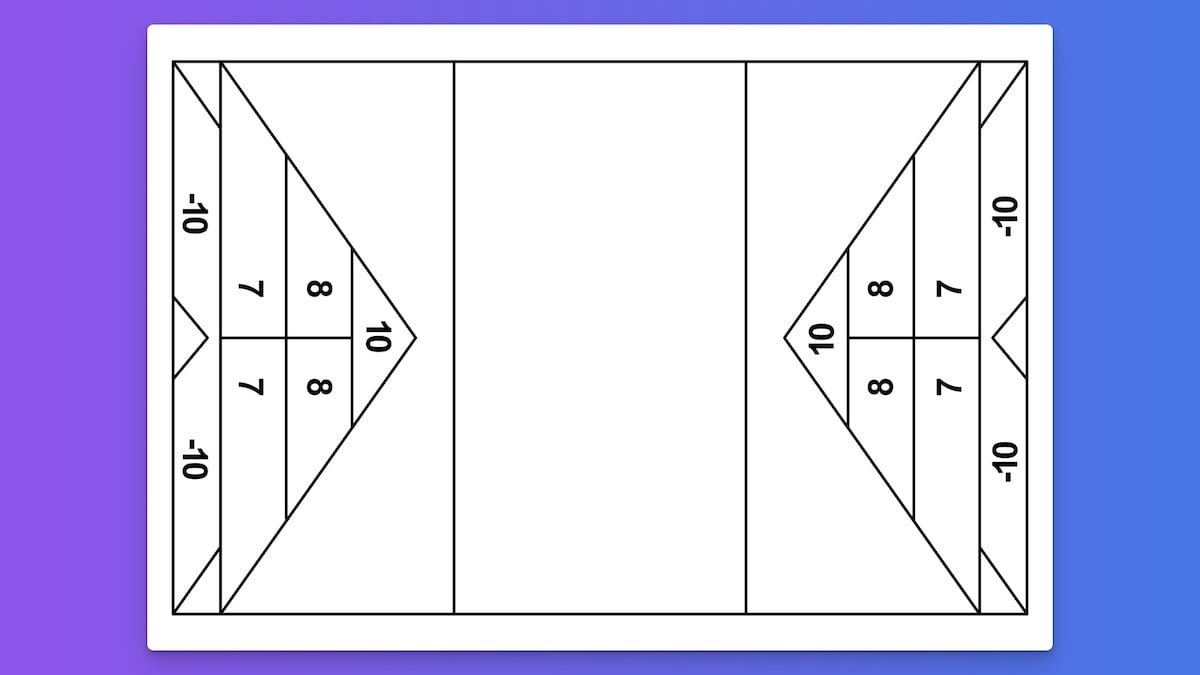
Credit: keepthescore.com
Common Mistakes
Keeping score in shuffleboard can be tricky. Many players make common mistakes that affect the game. Understanding these errors helps in having a fair match. This section highlights the common mistakes in shuffleboard scoring.
Fouls And Penalties
Fouls occur frequently in shuffleboard. A common foul is touching the puck while it’s in play. This leads to a penalty. Another foul is stepping over the baseline while shooting. This is called foot faulting.
Penalties for these fouls can vary. Often, the puck is removed from the board. In other cases, the player loses a turn. Knowing these rules is crucial. Avoiding fouls keeps the game smooth and fair.
Scoring Errors
Scoring errors are also common. Sometimes players count points for pucks that are not entirely in a scoring zone. This mistake can lead to disputes. Another error is not correctly identifying the winning puck.
To avoid these mistakes, use a consistent method. Check each puck’s position carefully. Ensure it is entirely within the scoring zone. Also, agree on the scoring rules before starting.
Avoiding these common mistakes ensures a fair and enjoyable game. Practice and attention to detail make a big difference in shuffleboard scoring.
Advanced Tips
Advanced shuffleboard players know the importance of refining their skills. These advanced tips will help you improve your game. By focusing on perfecting your aim and strategic scoring, you’ll see significant improvements.
Perfecting Your Aim
Aiming is crucial in shuffleboard. It can make or break your game. To improve your aim, practice your stance and grip. Stand with your feet shoulder-width apart. Hold the cue with a relaxed grip.
Next, focus on your release technique. Push the puck smoothly. Avoid jerky movements. Consistency in your release leads to better accuracy.
Visualize your shot. Picture the puck’s path. This mental practice helps to improve your aim.
Strategic Scoring
Scoring is more than just aiming for the highest points. It’s about strategy. Know when to aim for high points or when to block your opponent.
Study the game layout. Be aware of your opponent’s position. This helps you make better decisions.
Use a blocking strategy. Sometimes, it’s better to block your opponent’s path. This prevents them from scoring high points.
Lastly, consider the risk versus reward. High-risk shots might get you more points, but they can also backfire.
Shuffleboard Etiquette
Shuffleboard is a game of skill and precision, but it also demands good sportsmanship. Proper shuffleboard etiquette ensures a fun and fair game for everyone. Let’s dive into some key aspects of shuffleboard etiquette.
Respecting Opponents
Respect is the cornerstone of any game. In shuffleboard, it’s important to respect your opponents at all times.
- Offer a handshake before and after the game.
- Congratulate your opponent on good shots.
- Avoid celebrating excessively when you win a point.
Proper Conduct
Maintaining proper conduct on the shuffleboard court is key. This means following the rules and being mindful of others.
- Stay quiet while others are taking their shots.
- Wait your turn patiently.
- Avoid stepping on the playing surface.
Following these simple rules will make the game enjoyable for everyone.
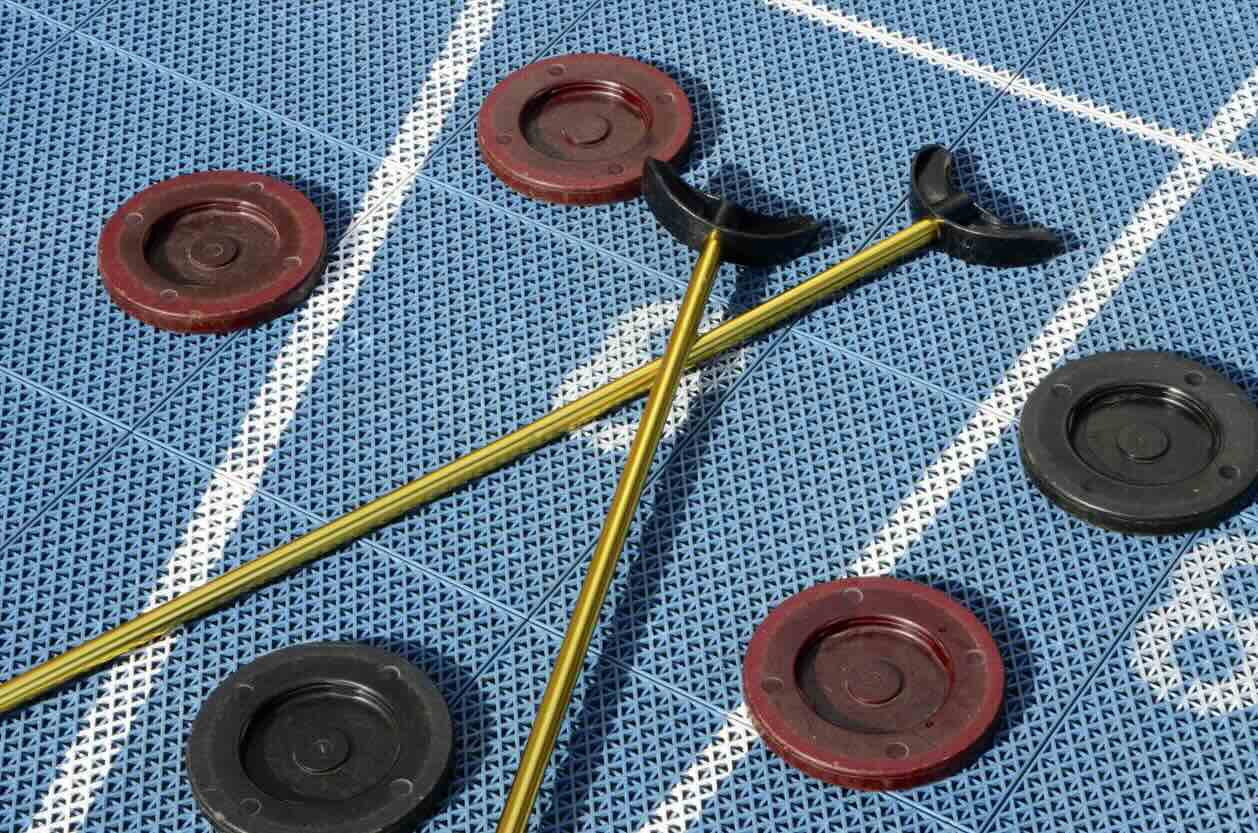
Credit: keepthescore.com
Frequently Asked Questions
How Do You Start Keeping Score In Shuffleboard?
To start keeping score, assign each player or team a unique score sheet. Record points based on where the pucks land.
What Is The Scoring System In Shuffleboard?
In shuffleboard, points are awarded based on puck positions within numbered zones. The highest score wins.
How Are Points Calculated In Shuffleboard?
Points are calculated by the puck’s position on the scoring grid. Each zone has a different point value.
What Happens If A Puck Is Touching A Line?
If a puck is touching a line, it scores the lower zone’s points. Placement is crucial for scoring.
Conclusion
Knowing how to keep score in shuffleboard makes the game enjoyable. It ensures fair play and helps track progress. Practice scoring regularly to become familiar. Use clear markers and maintain focus. Accurate scoring can improve your overall experience. Encourage others to learn scoring too.
This fosters a better game environment. Enjoy shuffleboard with confidence now!

